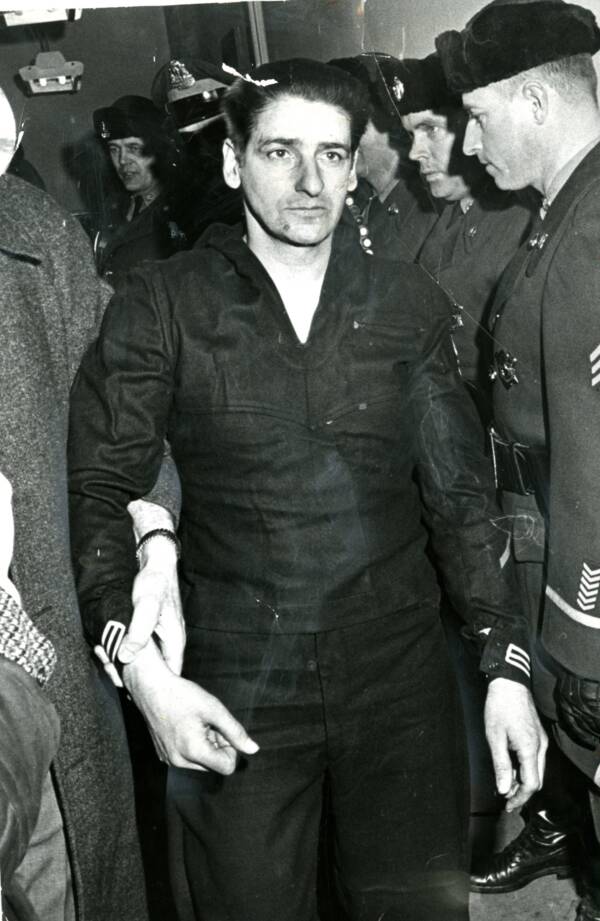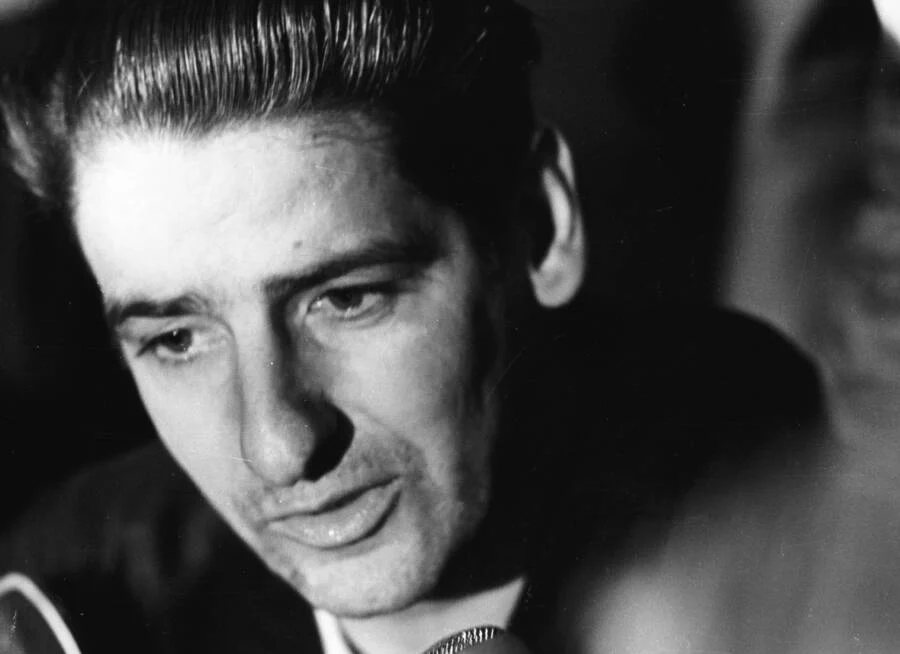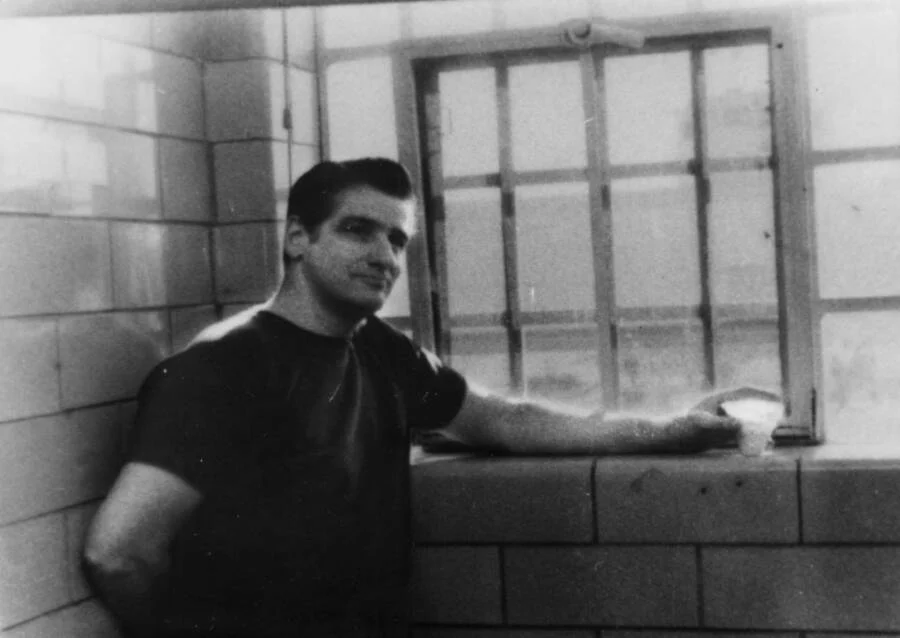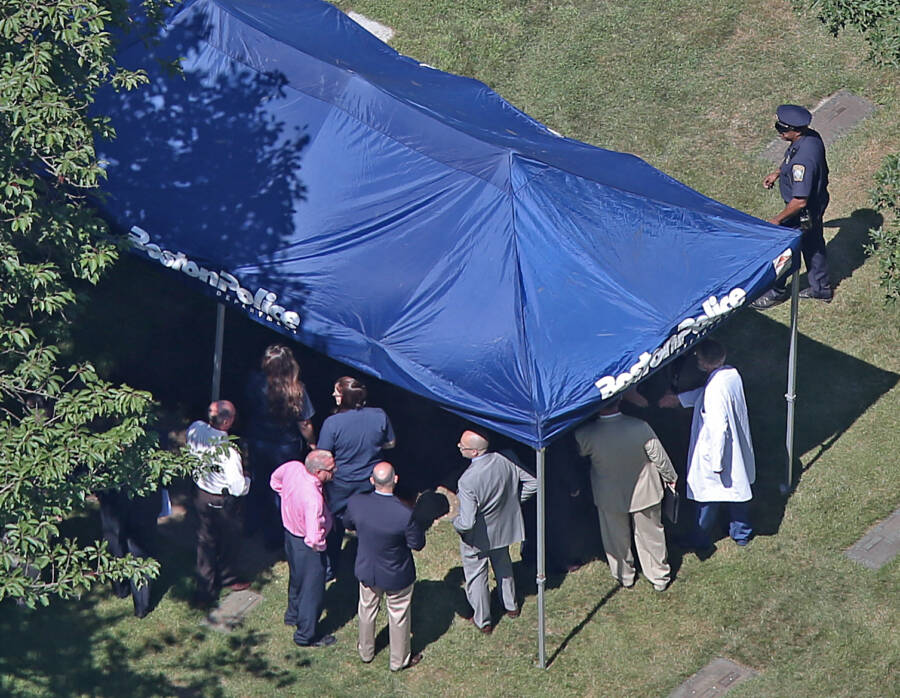In 1960s Boston, a wave of fear swept through the city as women rushed to buy locks and seek protection. Deadbolts and door chains flew off shelves, while animal shelters saw a spike in pet adoptions. The looming threat? The notorious Boston Strangler.
For a harrowing span of two years, the streets of Boston were gripped by terror as the Boston Strangler claimed victim after victim. No woman seemed safe, regardless of age or location within the city. As the death toll rose, law enforcement began to discern a disturbing pattern in the killer's methods: each victim was sexually assaulted and posed, with their stockings or bras fashioned into bows around their necks.
Despite intense efforts to capture the killer, the Boston Strangler remained at large until 1964 when Albert DeSalvo, a convicted robber and rapist, confessed to being the murderer. However, his claims were met with skepticism due to inconsistencies in his story and his reputation for exaggeration. DeSalvo was never convicted of the murders and was killed in jail in 1973, leaving the case unresolved.
For decades, the identity of the Boston Strangler remained a mystery. However, in 2013, breakthrough DNA testing finally provided conclusive evidence about who the real Boston Strangler was.
Inside The Boston Strangler Murders
On June 14, 1962, the Boston Strangler claimed his first victim. He entered the modest brick apartment of 55-year-old Anna Slesers and strangled her with the belt of her blue housecoat. When police discovered her body the following morning, they noted she had been sexually assaulted and found the belt tied around her neck in a bow.
Her son, who discovered her body, told the Boston Globe that his mother had no known enemies. Police initially thought she might have disturbed a burglar, leading to her murder.
However, the situation escalated when two more women were found murdered under strikingly similar circumstances just weeks apart. The bodies of 68-year-old Nina Nichols in Brighton and 65-year-old Helen Blake in Lynn were discovered with their stockings tied in bows around their necks, and in Blake's case, her bra was also used to fasten around her neck.
"The stocking was the instrument of death," a Boston Globe reporter wrote of Blake's death after the story broke, "the bra knotted at the nape as though the killer wanted to make sure of his work."
The killings accelerated rapidly from there. In August, 75-year-old Ida Irga was found dead. Just two days later, 65-year-old Jane Sullivan was discovered, strangled with her own nylons. By December, the body of 21-year-old college student Sophie Clark was found; she had been sexually assaulted and strangled. Notably, she was the first victim who was young and Black, diverging from the previous pattern.
"You're asking if people were scared?" a veteran reporter said of the spate of stranglings 40 years later, according to Mass Moments. "I covered the murders, and I was scared. I had an elderly mother in Medford, and after the fifth strangling, I was so scared I went over to her apartment and installed two deadbolts… But after a while you couldn't buy 'em. Sold out."
 The Boston Strangler, The Serial Killer Known For Leaving Pantyhose Tied Around Victims' Necks
The Boston Strangler, The Serial Killer Known For Leaving Pantyhose Tied Around Victims' Necks As the fear escalated, security measures became a top priority for residents. According to Mass Moments, deadbolt locks and door chains were in high demand, and the Animal Rescue League experienced a shortage of guard dogs due to the overwhelming number of requests, even as the Boston Strangler's spree continued.
The grim pattern persisted into the following year. On December 31, 1962, 23-year-old Patricia Bissette was found dead. A few months later, on March 6, 1963, 69-year-old Mary Brown's body was discovered. That same year, the Boston Strangler claimed the lives of three more women: 23-year-old Beverly Samans, 58-year-old Evelyn Corbin, and 23-year-old Joann Graff, all of whom had been sexually assaulted and strangled.
Police were scrambling for leads, focusing on reports of a man in green who offered to paint apartments in areas where victims lived, while questioning various suspects. Despite their efforts, they were still far from apprehending the Boston Strangler when he committed his final known murder, taking the life of 19-year-old Mary Sullivan in January 1964.
A police lieutenant told the Boston Globe, "It's quite apparent [sic] that this little girl was strangled." But the mystery of who the Boston Strangler was persisted. That changed when a man named Albert DeSalvo stepped forward to claim responsibility for the murders.
The Grisly Confession Of Albert DeSalvo
In October 1964, 33-year-old Albert DeSalvo was arrested after he broke into a woman's apartment, tied her up, and assaulted her. He confessed to police that he had broken into hundreds of homes and committed four rapes, boastfully claiming, "If you knew the whole story, you wouldn't believe it... It'll all come out."
 The Boston Strangler, The Serial Killer Known For Leaving Pantyhose Tied Around Victims' Necks
The Boston Strangler, The Serial Killer Known For Leaving Pantyhose Tied Around Victims' Necks Albert DeSalvo was born on September 3, 1931, into a tumultuous family environment marked by violence. His father once "sold" him and his siblings, and DeSalvo and his brother endured regular beatings. DeSalvo also witnessed horrific domestic violence, recalling an incident where his father knocked out his mother's teeth and broke all her fingers.
DeSalvo began to gain notoriety as a sexual offender in his early adult years. He earned the nickname "The Measuring Man" by posing as a modeling agent to grope women, which led to his arrest in 1960. He was also known as "The Green Man" for his role in a series of home invasions and sexual assaults throughout New England.
Initially, police did not consider DeSalvo a serious suspect in the Boston Strangler cases. As noted by Mass Moments, he was regarded as a notorious exaggerator and did not fit the physical descriptions provided of the strangler. Furthermore, his name had not surfaced during their investigations, and no physical evidence tied him to the crime scenes.
 The Boston Strangler, The Serial Killer Known For Leaving Pantyhose Tied Around Victims' Necks
The Boston Strangler, The Serial Killer Known For Leaving Pantyhose Tied Around Victims' Necks DeSalvo was sent to Bridgewater State Hospital for the Criminally Insane, where he struck up a friendship with another inmate, murderer George Nassar. According to Mass Moments, the pair concocted a scheme to split the reward money offered for information on the Boston Strangler. The plan was for DeSalvo to confide in Nassar, who would then relay the information through his lawyer, F. Lee Bailey.
"He convinced me by the description. He was getting it off his chest. I was the first person, apparently, to who he had really spoken about specifics of each crime," Nassar later said.
On March 6, 1965, Albert DeSalvo formally confessed to being the Boston Strangler. He claimed responsibility for the deaths of 11 women believed to be victims of the Strangler, as well as two additional murders, including that of 85-year-old Mary Mullen. DeSalvo asserted that Mullen had died of a heart attack in his arms, a detail corroborated by her death certificate.
Despite DeSalvo's detailed knowledge of the crimes, including specific aspects such as the color of victim Mary Brown's kitchen faucet, he was never charged with the murders attributed to the Boston Strangler. A forensic psychiatrist diagnosed him as schizophrenic and labeled him a "compulsive confessor" with a strong desire for acknowledgment. Consequently, DeSalvo was convicted on charges of robbery and assault, and he received a life sentence for the offenses known as the "Green Man" rapes.
In November 1973, eight years after his imprisonment, Albert DeSalvo was stabbed to death by another inmate. Any further information he might have had about the Boston Strangler was lost with his death—if he had any genuine knowledge to begin with. Many questioned the authenticity of his confession, fearing that the real killer might still be at large.
This uncertainty persisted for many years. However, a significant breakthrough occurred in 2013 when a DNA test finally provided some clarity to the city of Boston.
How DNA Offered Answers About The Boston Strangler — And Left More Questions Unanswered
 The Boston Strangler, The Serial Killer Known For Leaving Pantyhose Tied Around Victims' Necks
The Boston Strangler, The Serial Killer Known For Leaving Pantyhose Tied Around Victims' Necks Although Albert DeSalvo passed away in 1973, the enigma surrounding the Boston Strangler continued. Some accepted his confession at face value, while others speculated that DeSalvo might have confessed solely for the notoriety and potential financial gain, suggesting that the real culprit remained free.
In 2001, law enforcement began utilizing DNA technology in hopes of definitively resolving the Boston Strangler case once and for all.
Initially, investigators exhumed DeSalvo's body to compare his DNA with the only DNA evidence recovered from the crime scene—seminal fluids found on Mary Sullivan's bed. Unfortunately, there was no match between the samples, leading to disappointment.
However, with advances in DNA technology, the investigation took a new turn in 2013. Investigators tested DNA from a water bottle used by DeSalvo's nephew against the seminal fluids from Sullivan's bed, and this time, the samples matched. To confirm these findings, they exhumed DeSalvo's body again and obtained DNA from his femur and three teeth, which also matched the samples from the crime scene.
 The Boston Strangler, The Serial Killer Known For Leaving Pantyhose Tied Around Victims' Necks
The Boston Strangler, The Serial Killer Known For Leaving Pantyhose Tied Around Victims' Necks Despite these conclusive DNA matches, the DeSalvo family and their lawyer, Elaine Sharp, contended that the DNA evidence did not prove that Albert DeSalvo was the murderer of Mary Sullivan. They pointed out that DeSalvo's nephew had not consented to the DNA testing, and argued that the presence of DeSalvo's DNA only established his presence at the crime scene, not his guilt as the killer.
"Just because you find DNA that matches somebody on their body doesn't mean that they murdered them," she told The New York Times.
Despite the DNA evidence linking Albert DeSalvo to the crime scene, the DeSalvo family remained skeptical that it proved he was Mary Sullivan's killer. Their attorney, Elaine Sharp, emphasized that DeSalvo's nephew had not consented to provide his DNA, and argued that the presence of DeSalvo's DNA only confirmed his presence at the scene, not that he committed the murder.
However, law enforcement viewed the situation differently. They considered the DNA match to significantly bolster the case against DeSalvo, describing it as bringing the investigation to the "threshold of unprecedented certainty" regarding Mary Sullivan's murder. Given that DeSalvo had already confessed to killing Sullivan and his DNA was found at the crime scene, police concluded that he was indeed her murderer.
Nonetheless, this evidence did not conclusively prove that DeSalvo was responsible for all the crimes attributed to the Boston Strangler. It confirmed his involvement in the murder of Mary Sullivan, but did not necessarily implicate him in the murders of the other 12 women to whom he had confessed.
"We don't claim with certainty that Albert DeSalvo is a suspect in each of them," District Attorney Daniel F. Conley of Suffolk County admitted to The New York Times in 2013.
Despite this, uncertainties continue to cloud the Boston Strangler case. This enduring intrigue is highlighted by the 2023 Hulu film "Boston Strangler." Starring Keira Knightley and Carrie Coon, the film explores the efforts of two journalists trying to piece together the crimes linked to the Boston Strangler.
Years have passed since the Boston Strangler terrorized the city, yet the fear he instilled still resonates deeply. Whether Albert DeSalvo was truly the Boston Strangler or if another perpetrator remains at large, the lingering doubt continues to provoke unease, leading to sleepless nights, fortified locks, and the adoption of new guard dogs.


















